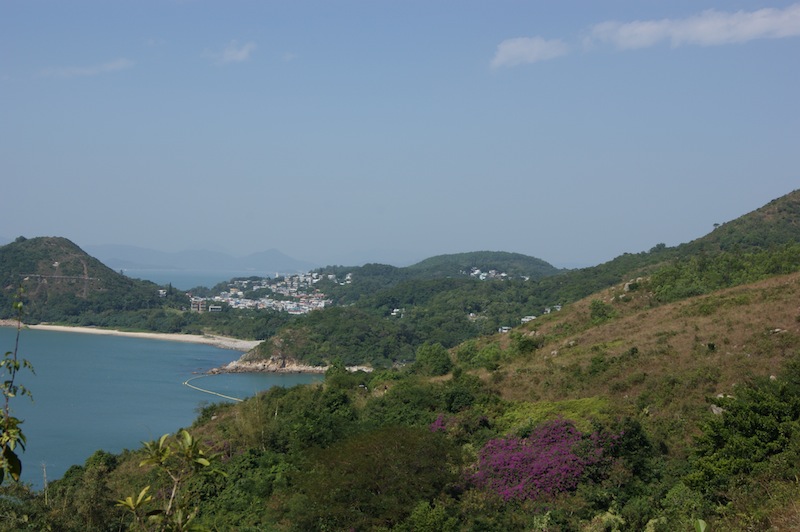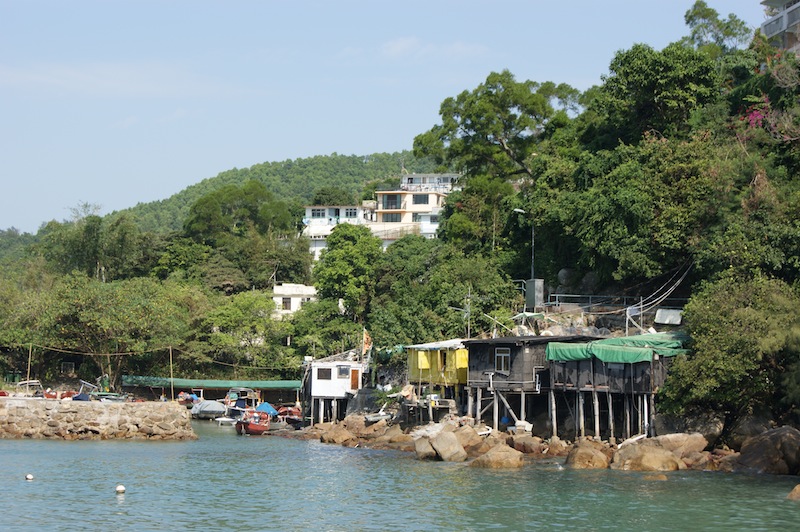Hong Kong is a territory made up of more than 200 islands and we were keen to take a hike across one of its most popular, Lamma.
That meant we needed fuel, which was provided courtesy of an excellent breakfast at the Hotel Icon. Throughout our stay we found the food to be delicious, fresh and varied, all served up with excellent service.
The journey to Lamma was memorable, beginning with the famous Star Ferry from Kowloon to Hong Kong Island. We drank in the amazing views of the harbour and the giant Two IFC building from the deck of one of Star’s venerable vessels, and then caught a separate ferry to Lamma itself, chugging through busy shipping lines before arriving at the main village of Yung Shue Wan. We stepped ashore into a settlement that, like so much of Hong Kong, we found to be friendly, full of character and colourful – although not exactly attractive by Western standards. Think concrete boxes, rubbish, collapsing sheds and so on.

We grabbed some fruit from a stall amid the many seafood restaurants and made our way out of town on the Family Trail. This hike would take us across the island through vibrant greenery and over a hilly landscape notable for its sparse vegetation and giant boulders. Kites hovered above us, the sea stretched out beyond, dotted with tiny fishing boats and giant tankers. Bizarrely, this otherwise tranquil and green island, once known for being a hippy haven, is dominated by a gruesome giant coal-fired power station that often gets in the way of a good photo. A sole wind turbine fought to redress the eco balance.
We trekked away from the power station, climbed slopes and sweated in the heat. Butterflies danced around us and we occasionally glimpsed a tiny beach, far below. There was little in the way of development.
We originally planned to walk all the way to remote Tung O and its beach but our trusty Lonely Planet guide suggested that Lo Shing Beach was the best on the island. So we diverted off the main path, traipsed through bushes and marshes and arrived to find that we were the only people there, apart from a few staff manning a first aid post.

It was a charming spot, a small cove with a sandy beach backed by trees and bushes, the only sound the sea lapping onto the sand. We found some shade and spent a few hours reading, relaxing and taking a dip. A few other people turned up later in the day to share the beach with us, along with some fishermen and divers in a couple of rowing boats who spent an hour or two ferreting among the rocks.
After several lovely hours relaxing we walked on to the famous fishing village of Sok Kwu Wan, which sits in a sheltered bay marred only by a small cement works and a couple of beaches covered in litter. The village is notable for having a string of seafood restaurants built on stilts over the water, which photograph really well, but as a settlement it doesn’t offer much else to amuse the tourist. The restaurants display their wares in tanks, which are crammed tight with shrimp, fish, crabs and lobsters of all shapes and sizes. Animal welfare isn’t high on the list of priorities in Hong Kong.

We opted, on the recommendation of our hotel concierge, for the Rainbow restaurant and were more than pleased that we did. The service was great, the food exceptional – especially my salt and pepper prawns and scallops with garlic. But being a Monday, the village was quiet and lacked the atmosphere that comes with a restaurant buzzing with lively crowds. In hindsight, a weekend visit would’ve been better.
The Rainbow provided a free ferry service back to Kowloon, which we took advantage of. The sea may have been choppy but our captain got us back in time to enjoy a few beers at the Cafe de Fontaine near the hotel, which made for a great end to a perfect day.

